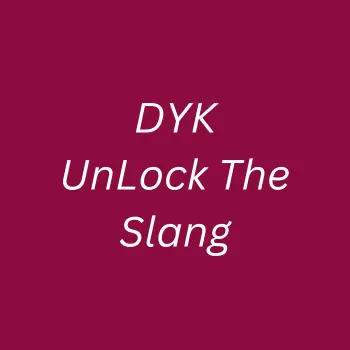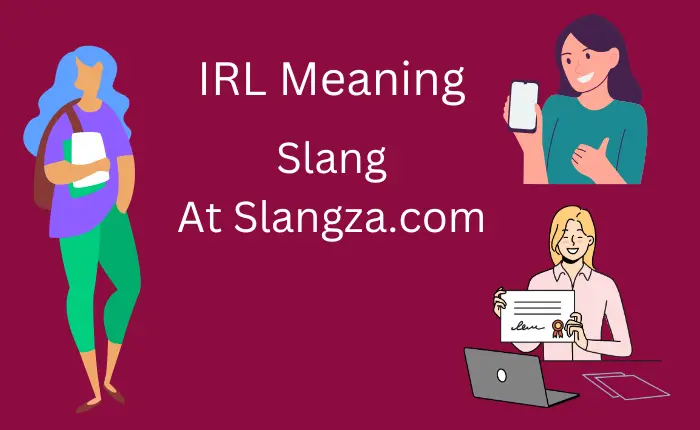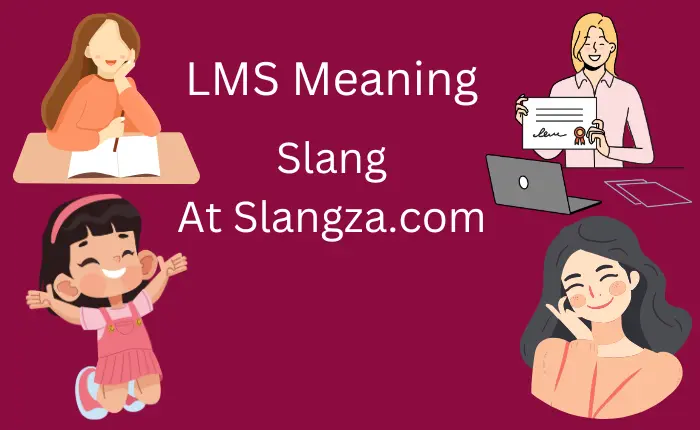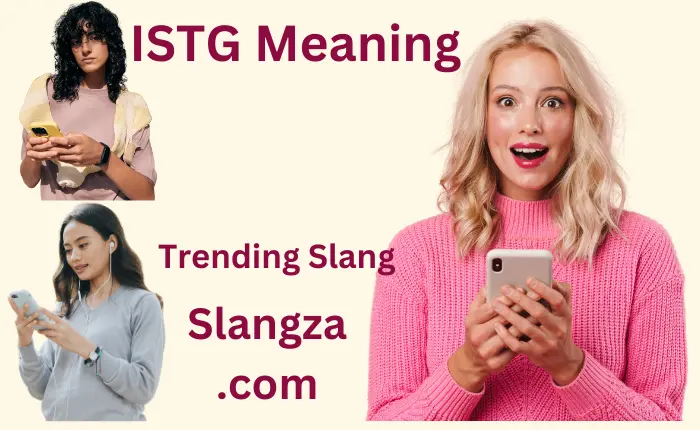What Does “DYK” Mean? Understanding the Popular Abbreviation

Did You Know?
Year It Began Trending 2010
What is the DYK Meaning? DYK stands for “Did You Know?” and is commonly used to introduce interesting facts or trivia in a fun and engaging way. This slang has gained popularity in casual conversations and on social media platforms, where it invites curiosity and encourages people to explore new information. By using DYK, we can easily grab attention and spark conversations, making learning feel more exciting and accessible.
The use of DYK not only adds a playful touch to discussions but also helps create connections among people. Sharing surprising or fun facts can lead to deeper conversations and a sense of camaraderie as friends and followers bond over shared knowledge. Overall, DYK enhances communication by making it lively, informative, and enjoyable, turning everyday conversations into opportunities for learning and connection.
Why do we love this DYK Slang?
Slang is a fun and informal way of communicating that allows people to express themselves creatively and connect with others. We love using slang because it makes conversations lively and relatable. DYK (Did You Know?) is a great example of slang that captures our attention and invites curiosity. Here are some reasons why we love this particular slang:- Engagement: this slang grabs people’s attention and encourages them to learn something new.
- Sharing Knowledge: It allows us to share interesting facts in a simple and fun way.
- Casual Vibe: Using this slang makes conversations feel relaxed and friendly.
- Social Connection: It helps spark discussions and connect with others over shared interests.
- Curiosity: DYK inspires curiosity and encourages people to ask questions and explore new topics.

Key Details
| Abbreviation: | DYK |
| Meaning: | Did You Know? |
| Emotion: | Curiosity & Fun |
| For Work & Use: | Safe |
| For Children: | Safe |
| Other meaning in different Social platform: | Questioning |
| Or Social Media usage: | Safe |
| Instagram meaning: | Trivia or interesting information |
| Snapchat meaning: | Fun fact or surprising info |
| Year it began trending: | 2010 |
What does DYK mean?
DYK stands for “Did You Know?“, commonly used to share interesting facts or trivia that engage the audience. It can also mean “Do You Know?”, asking if someone is aware of something, or “Don’t You Know?“, emphasizing information that should be common knowledge. This acronym is popular in casual conversations and on social media, making learning fun and accessible. Overall, DYK fosters curiosity and connection through engaging information.
Uses by examples and other meanings
Uses of DYK
- Introduction of Interesting Facts:
- Example: “DYK that honey never spoils? Archaeologists have found pots of honey in ancient Egyptian tombs that are over 3,000 years old and still edible!”
- Meaning: This use introduces a fun or surprising fact, aiming to engage the audience.
- Social Media Posts:
- Example: “DYK that octopuses have three hearts? 🐙 #FunFact”
- Meaning: On platforms like Twitter or Instagram, DYK is often used to grab attention and encourage sharing.
- Trivia and Quizzes:
- Example: “DYK that the shortest war in history lasted only 38 minutes? It was between Britain and Zanzibar in 1896.”
- Meaning: This context is often found in trivia games, quizzes, or educational content.
- Encouraging Discussion:
- Example: “DYK that reading for just six minutes can reduce stress by up to 68%? Let’s talk about our favorite books!”
- Meaning: Here, it prompts further conversation about a related topic.
- Humorous or Sarcastic Tone:
- Example: “DYK that I can eat an entire pizza by myself? Just saying!”
- Meaning: This usage can be lighthearted or sarcastic, often shared among friends.
Other Meanings of DYK
While “Did You Know?” is the primary meaning, in some contexts, DYK can also be:- “Do You Know?”: Used similarly to ask if someone is aware of a fact.
- Example: “DYK where the nearest coffee shop is?”
- “Don’t You Know?”: Sometimes used to emphasize a point or a fact that the speaker believes should be common knowledge.
- Example: “DYK that exercise is good for your mental health?”
Social Media Usage of DYK Slang
This slang is commonly used as slang on social media. Its casual and engaging nature makes it a popular choice for sharing interesting facts, trivia, or surprising information in a way that grabs attention. Here are some examples of how DYK meaning is used across different social media platforms:- Users often tweet fun facts or trivia with DYK to spark interest.
- Example: “DYK that sloths can hold their breath longer than dolphins? #FunFact”
- Posts featuring intriguing visuals or infographics may start with DYK to captivate viewers.
- Example: “DYK that there are more stars in the universe than grains of sand on Earth? 🌌✨”
- Users share interesting articles or personal anecdotes beginning with DYK to engage their friends.
- Example: “DYK that bananas are berries, but strawberries aren’t? Crazy, right?”
- TikTok
- Content creators use DYK in video captions or as part of their dialogue to present surprising information.
- Example: “DYK that sharks have been around longer than trees? Let’s dive into it! 🦈🌳”
- Snapchat
- Users might include DYK in their stories to share quick, engaging facts with friends.
- Example: “DYK that sea otters hold hands while sleeping so they don’t drift apart? 🦦💤”
Cultural and Regional Interpretations of DYK
The acronym DYK (Did You Know?) has cultural and regional interpretations that can vary based on context and audience. Here’s a look at some of these interpretations:- Global Curiosity
- In many cultures, sharing interesting facts is a way to foster conversation and connection. DYK meaning is often used in educational contexts to promote curiosity and learning, encouraging people to explore new topics together.
- Informal Communication
- In cultures where informal communication is preferred, such as in many Western countries, DYK meaning is a casual way to introduce facts without being overly formal. It resonates well with younger audiences who favor brevity and playfulness in their language.
- Social Media Culture
- The rise of social media has popularized DYK as a means to quickly share knowledge and engage followers. In regions where social media is a primary form of communication, like the United States and parts of Europe, DYK is frequently used to capture attention in a fast-paced digital environment.
- Educational Settings
- In educational contexts around the world, teachers and educators may use DYK meaning to introduce fun facts and stimulate student interest in various subjects. This approach can vary by region, with some cultures placing a higher value on memorization while others encourage exploration and discussion.
- Informal Learning
- In cultures that emphasize informal learning, DYK is often used to share knowledge in social settings, promoting group discussions and debates. This can be seen in community gatherings or among friends who enjoy exchanging facts.
What Emojis Can be Used With DYK Slang?
When using DYK (Did You Know?) to share interesting facts, various emojis can add extra flair and make the message more engaging. Here are some emojis that work well with DYK:- 🔍 (Magnifying Glass) – For facts or discoveries that invite curiosity.
- Example: “DYK that honey never spoils? 🔍”
- 🤔 (Thinking Face) – For prompting thought or reflection.
- Example: “DYK sloths can hold their breath longer than dolphins? 🤔”
- 💡 (Light Bulb) – For sharing enlightening or surprising facts.
- Example: “DYK that octopuses have three hearts? 💡”
- 🌍 (Globe) – To highlight global or universal facts.
- Example: “DYK that there are more stars in the universe than grains of sand on Earth? 🌍”
- 📚 (Books) – For educational or trivia-related facts.
- Example: “DYK that reading for six minutes can reduce stress by up to 68%? 📚”
- 🧠 (Brain) – For fun facts that stimulate learning or thinking.
- Example: “DYK that your brain generates enough electricity to power a lightbulb? 🧠”
- 🦈 (Shark) – For fun or science-related facts.
- Example: “DYK that sharks have been around longer than trees? 🦈”
- ✨ (Sparkles) – For surprising or magical facts.
- Example: “DYK that some species of jellyfish are biologically immortal? ✨”
- 🔥 (Fire) – For exciting, amazing, or attention-grabbing facts.
- Example: “DYK that the hottest recorded temperature on Earth was 134°F? 🔥”
- 😱 (Face Screaming in Fear) – For shocking or unbelievable facts.
- Example: “DYK that an octopus can change both color and texture? 😱”

Impact on Language and Communication
The slang “DYK” (Did You Know?) has changed the way we communicate, especially on social media. Here’s how it impacts language and communication:- Sparks Curiosity
- DYK makes people want to learn something new. It grabs attention and makes sharing facts more fun. It encourages people to ask questions and learn in an easy way.
- Example: On Instagram, someone might post “DYK that sloths can hold their breath longer than dolphins? 🦥” to get people interested.
- Casual and Friendly Tone
- DYK makes talking to people feel more relaxed and friendly. It’s a way to share knowledge without sounding too serious. This is especially popular with younger people.
- Example: “DYK that the Eiffel Tower can grow taller in hot weather? 🌞” makes sharing facts feel like a friendly chat.
- Quick and Simple
- DYK is short and to the point, which makes it easy to share interesting facts quickly. This is perfect for platforms like Twitter, where space is limited, and people want information fast.
- Example: “DYK bananas are berries? 🍌” is short but interesting.
- Social Media Learning
- DYK is mostly used on social media. It helps share fun facts and trivia that people enjoy reading and sharing. This makes learning feel exciting and interactive.
- Example: “DYK that honey never spoils? 🍯” shared on Facebook encourages people to talk and share.
- Encourages Learning in a Fun Way
- DYK makes learning feel less formal. Instead of reading textbooks, people learn new things through fun facts and casual conversations.
- Example: “DYK that reading for just six minutes can reduce stress by 68%? 📚” invites people to share their thoughts and learn something new in a fun way.
FAQs
Conclusion
In conclusion, DYK (Did You Know?) is a popular phrase used to share interesting facts and engage people in conversations. It has become a common way to spark curiosity and promote learning, especially on social media. Whether used for fun, education, or trivia, DYK helps create connections among people. Its informal nature makes it easy to use in various situations, making learning enjoyable and accessible for everyone.






